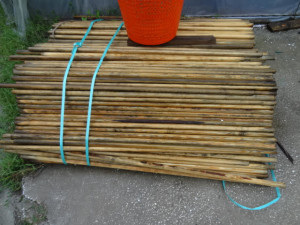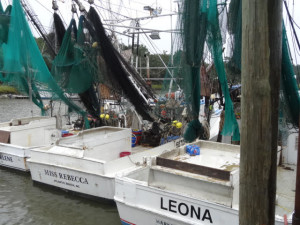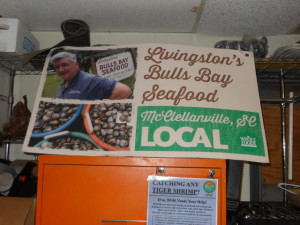Updated: Oyster or Erster, Will Oyster Roasts be called off?
Updated Press Release:
October 23, 2015
DHEC reopens shellfish harvesting area in Charleston County
COLUMBIA, S.C. – The S.C. Department of Health and Environmental Control (DHEC) has reopened a shellfish bed in Charleston County previously closed due to excessive rainfall earlier this month, the agency announced today.
“Water quality data indicate that the approved harvesting area in St. Helena Sound north to the Folly Road/Highway 171 bridge in Charleston County is suitable for harvesting,” said Mike Pearson, manager of DHEC’s Shellfish Sanitation Section.
For information on Georgetown and Horry counties’ clam and oyster harvesting areas, call DHEC’s Environmental Quality Control office at (843) 238-4378. For more information on clam and oyster harvesting areas in Beaufort County, call DHEC’s EQC office at (843) 846-1030. For more information on Charleston County clam and oyster harvesting areas, call DHEC’s EQC office at (843) 953-0150.
###
Jim Beasley
Public Information Director
beaslejc@dhec.sc.gov
803.898.7769
Original Article:
Procrastination can be our friend. I promised CharlestonDaily.net that I would write a few words, more than 500 less than 750, about the beloved oyster roasts that are ingrained in Charlestonians DNA. That was back in September a full month before the “official” start of oyster season, or is it oyster-roast season, on October 1. I use “official” loosely since one of my shellfish sources, Livingston’s Bulls Bay Seafood, tells me that the bivalves of November and later months offer a plumper and brinier mollusk for your gustatory delight.
According to Bill Livingston, that extra thirty-one days in October when the waters are cooler allow for more nutrient rich waters which oysters are constantly filtering and taking in goodies. So, I figured that if the oysters are better when the oysterman procrastinates a month, why not do likewise.
I had taken some notes and photos when I visited McClellanville, SC on a cloudy, rainy Thursday during the last week in September to learn all there is to know about oyster harvesting. Of course, trying to read my notes today is a challenge since the paper got wet in the rain and ink smudged. I know paper and pen is old fashioned, but I didn’t have any more room on my iPhone for notes or recording after taking a bunch of pictures and there was no cell service to reach the cloud, although you can see there were plenty of clouds.
Oysters are prolific little mollusks, dropping millions of eggs in a lifetime. The oysters here in South Carolina grow in clusters unlike the single shell types of the Gulf Coast or New England or the Chesapeake. The eggs will attach or set themselves to whatever solid structure they land on and start to grow. Oystermen like Livingston will farm these wild oysters by setting out surfaces for egg attachment.
 You’ve heard of a “stick in in the mud”? On leased space in Bulls Bay, Livingston’s crew will stick over 1500 broomsticks in the mud at low tide to create culling sites for those oyster eggs that show up at high tide. Once attached and growing, it will be two years before the oysters are ready for harvest.
You’ve heard of a “stick in in the mud”? On leased space in Bulls Bay, Livingston’s crew will stick over 1500 broomsticks in the mud at low tide to create culling sites for those oyster eggs that show up at high tide. Once attached and growing, it will be two years before the oysters are ready for harvest.
I’m getting to the procrastination part.
Shellfish harvesting has been prohibited effective October 3 due to the thousand year flood that brought tons of water and crap down the rivers to the bays where the shellfish hang out in Low Country. Here’s the news release from DHEC.
FOR IMMEDIATE RELEASE
October 3, 2015
DHEC closes numerous clam and oyster harvesting areas
COLUMBIA, S.C. – The S.C. Department of Health and Environmental Control has issued a precautionary closure of much of the state’s shellfish harvesting due to excessive rainfall, the agency announced today.
This closure affects all shellfish harvesting for the area extending from St. Helena Sound, including the Coosaw River to the mouth of and including the Bull River, then continuing north to the North Carolina state line. This closure will remain in effect until sampling results indicate that bacteria levels are suitable for shellfish harvesting to resume.
 For more information on clam and oyster harvesting areas in Beaufort County, call DHEC’s Environmental Quality Control office at (843) 846-1030. For information on Georgetown and Horry counties’ clam and oyster harvesting areas, call DHEC’s EQC office at (843) 238-4378. For more information on Charleston County clam and oyster harvesting areas, call DHEC’s EQC office at (843) 953-0160.
For more information on clam and oyster harvesting areas in Beaufort County, call DHEC’s Environmental Quality Control office at (843) 846-1030. For information on Georgetown and Horry counties’ clam and oyster harvesting areas, call DHEC’s EQC office at (843) 238-4378. For more information on Charleston County clam and oyster harvesting areas, call DHEC’s EQC office at (843) 953-0160.
Jim Beasley
Public Information Director
beaslejc@dhec.sc.gov
803.898.7769
Okay, so now I don’t have to write this story anymore, because there will be no oysters for oyster roasts for the next few weeks, maybe months. Instead, here’s a link to the first known use of the word “oyster” in a popular American song, Let’s Call the Whole Thing Off, back in 1937,



Just saw this page and would like to see mire